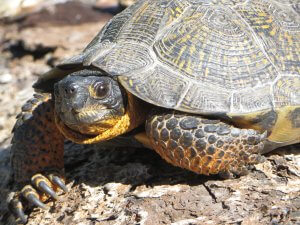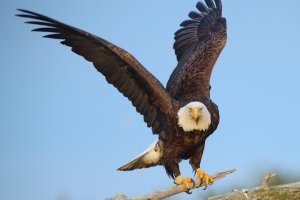
Nature NB values the important role that many agricultural producers play in providing local food, supporting local economies, and serving as stewards for wildlife. Farms of all shapes and sizes provide habitat for species of conservation concern, such as the iconic Bobolink, the elusive Wood Turtle, and the acrobatic Barn Swallow.
With support from Environment and Climate Change Canada and the NB Environmental Trust Fund, Nature NB has led the creation of a collaborative conservation plan for agricultural areas in the Wolastoq – Saint John River watershed. This region is both a hotspot for agriculture and species of conservation concern. Our agroecosystems team works to conserve or protect key ecosystems that provide habitat for over 10 species at-risk, including farm infrastructure, grasslands, riparian areas, wetlands, woodlands, and other farmland, like orchards and row crops.
Wolastoq Watershed
The Wolastoq (Saint John River) watershed begins in separate streams in Maine, USA and Québec coming together to form a 673 km river, flowing through a large part of New Brunswick before emptying into the Bay of Fundy. Large portions of the watershed are classified as active agricultural land in both the upper and lower sections of the river.

Which species at risk rely on agricultural landscapes?
Agricultural landscapes offer important habitat to many species of conservation concern and of cultural importance, including:
- Barn Swallow
- Bobolink
- Wood Turtle
- Monarch
- Common Nighthawk
- Little Brown Myotis
- Butternut
- Bald Eagle


What we offer
Advice for farmers on sustainable beneficial management practices to protect species at risk on their farm
Connecting farmers to support and funding to implement beneficial management practices on their farms
Site visits and tailored management plans
Give nesting swallows or roosting bats in your barns/sheds space, or invite them to your farm with nesting boxes or bat houses

Shine outdoor lights toward the ground and pick warm colour light to help insects and pollinators

Maintain and expand natural buffer zones along streams and wetlands

Delay your first cut of hay until mid-July to help nesting grassland birds

Our partners
- Agricultural Alliance of New Brunswick
- Agriculture and Agri-Food Canada
- Birds Canada
- Canadian Forage and Grassland Association
- Clean Annapolis River Project
- Canada Water Agency
- NB Agriculture, Aquaculture, and Fisheries (DAAF)
- NB Environment and Local Government (DELG)
- NB Natural Resources and Energy Development (DNRED)
- Environment and Climate Change Canada – Canadian Wildlife Service (ECCC – CWS)
- Global Conservation Solutions
- Kennebecasis Watershed Restoration Committee
- Living Lab New Brunswick
- Maliseet Nation Conservation Council
- Nashwaak Watershed Association Inc.
- National Farmers Union of New Brunswick
- Nature Conservancy of Canada
- Nature Trust of New Brunswick
- New Brunswick Environmental Network
- New Brunswick Soil and Crop
- University of New Brunswick (UNB)
- Wolastoqey Nation in New Brunswick
- World Wildlife Fund- Canada (WWF)
Resources
The page ends here, but the conversation doesn’t have to. Here’s a token of our gratitude for reading along.
Fill out the form below for a chance to win a $25 Tim Hortons gift card.
*Link leads to an external website
For more information about the project, please contact Nature NB at info@naturenb.ca or 506-459-4209



